No products in the basket.

There seem to be an increasing number of letters on wine labels like AC, AOC, AP, AOP, DO, DOC, DOCG, DOP, DOQ, IGP, IGT, PDO, PGI, POP and VdIT – and these are just a selection from wine labels from EU countries. But what do they actually mean? What is AC wine? What does AOP mean? What is the difference between AC and AOC? These are just some of the questions that I am asked as these acronyms can cause more confusion than clarification. The short answer is that AOC, AP etc are all geographical indications or GIs. But what does that mean and what do these geographical designations or appellations as they are often called tell us about the origin of the wine? And do appellations on wine labels guarantee more than the origin of the wine? Read ahead for the answers to these questions and more so that you can make sense of these wine label terms and tell the difference between AC, AOC, AP & AOP etc.
AC, AOC, AP, AOP, DO, DOC, DOCG, DOP, DOQ, IGP, IGT, PDO, PGI, POP and VdIT are all geographical indications as defined by the EU, i.e. terms used to identify a product as originating from a particular region and where according to the EU “its quality, reputation or other characteristic is linked to its geographical origin”. This distinct quality, reputation or characteristic may arise because of traditional viticulture practices, wine-making methods or particular grape varieties which have been used in the specific region for many years. As well as giving consumers some reassurance about the origin, GIs are also useful for producers to help market their products. GIs don’t just apply to wines of course but also to foods like Parma ham and Roquefort cheese.
In terms of wine, GIs are essentially defined, designated vineyard areas that can be as large as Bordeaux or as small as a particular vineyard plot such as Les Longeays in Pouilly Vinzelles in the Mâcon region of Burgundy. So is a GI or an appellation a guarantee that a wine is the product of grapes grown in that area? You would think so – but it’s not quite that simple …
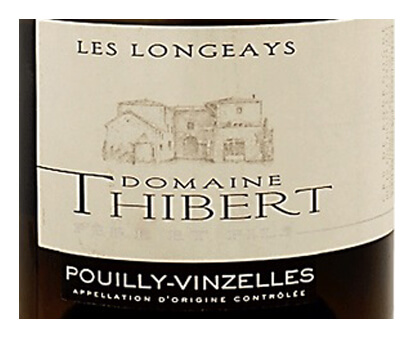
As I have stated in my previous blog on the provenance of wine, for some wines, if a GI is stated, only a minimum of 85% of grapes used must come from the GI in question. Similarly only 85% need come from grapes of the specified vintage and from the specified grape variety. So in order for you to be 100% sure we need to delve a little deeper and split GIs into PDOs and PGIs (more acronyms, sorry!).
PDOs or Protected Designation of Origin, known as wine appellations
A PDO indicates products that are produced, processed and prepared in a specific geographical area, using the recognised know-how of local producers and ingredients from the region concerned. To be recognised formally as a PDO the producers must adhere to a precise set of specifications particular to each individual PDO including permitted grape varieties, wine-making techniques and vineyard practices such as permitted yield levels. But the fundamental requirements for all PDO wine are that 100% of grapes must come from the region and the wine itself must be made in the region.
The PDO logo whilst mandatory for PDO food products is optional for wine and I must say I don’t think I have ever seen it on a wine label. PDOs are what we know as appellations of origin although the term appellation is mistakenly used more generally to include PGIs.
Like PDOs a PGI product’s quality and/ or reputation is linked to the place or region where it is produced, processed or prepared but the ingredients used need not necessarily all come from that PGI area. For wine it means that a minimum of 85% of the grapes must come from the geographical area where the wine is made. The PGI areas tend to be larger than PDO regions. Again all PGI products must adhere to a precise set of specifications though in general these are not as strict as PDO regulations. The PGI logo is also optional for wine.
There is a third wide category of wines and they are wines without geographical indication, a catch all for everything else that doesn’t fall into the PDO and PGI categories.
If the PDO and PGI logos are not used on wine labels, how are we to know whether a wine is PDO, PGI or a wine without GI? To answer this we need to look at each individual country’s PDO, PGI & other wine designations since each country sets the detailed specifications that must be met and polices the use of their GIs.
I go into more detail with examples below and I use the French terms as they are probably the ones that are most familiar. I also set out in tables below the terms used in the other main EU wine-producing countries. Note however that I don’t go into much detail on Germany and Austria’s wine labelling; the reason for this is simply that their wine label terms are more complex and deserve a detailed blog of their own; watch this space.
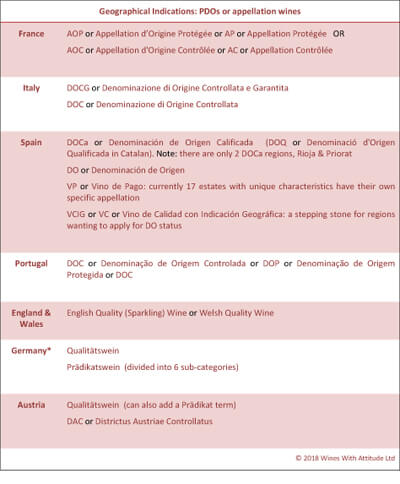
* In Germany the PDOs must state the region they come from on the label but you will also see either the term Qualitätswein or Prädikatswein (or one of its 6 subcategories) depending on the grape’s sweetness at harvest e.g Andreas Bender’s Pinot Noir is labelled Deutscher Qualitätswein Pfalz, Pfalz being the region where all the grapes are grown and the wine is made. More on German & Austrian wine at a later date.
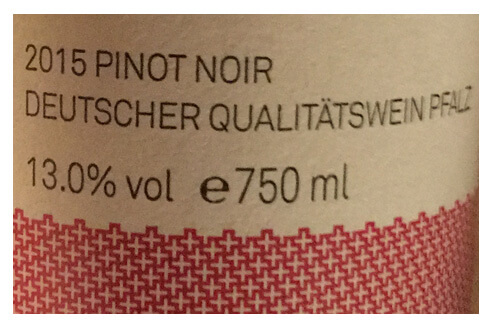
All PDO wines can use PDO or the equivalent local term but in countries where there are different quality levels of PDO e.g. Italy’s DOCG & DOC and Spain’s DOCa & DO winemakers naturally prefer not to use the more general PDO equivalent, DOP.
To put these labelling terms into context… in France a PDO wine is recognised by its appellation, known since 2008 as “Appellation d’Origine Protégée” or AOP or “Appellation Protégée” or AP. In reality most producers still use the terms that are more familiar to us, “Appellation d’Origine Contrôlée” or AOC or “Appellation Contrôlée” or AC. Perhaps surprisingly the EU is very relaxed about which term is used, AP, AOP, AC or AOC. However I couldn’t find one wine in the Wines With Attitude portfolio that uses the newer terms AP and AOP.
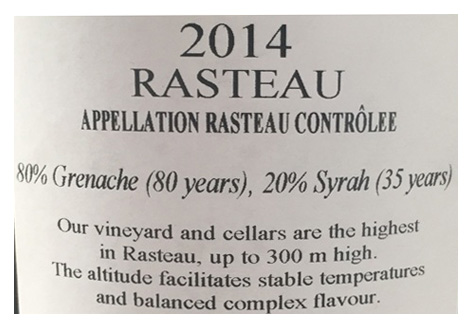
Domaine des Escaravailles’s La Ponce Rasteau states on the label that it is Appellation Rasteau Contrôlée, Rasteau being the Protected Designation of Origin. Domaine Thibert’s Pouilly Vinzelles label states Pouilly Vinzelles Appellation d’Origine Contrôlée. But what do these terms tell us about the wine in the bottle? Well, you can be sure with the Pouilly Vinzelles that it is 100% Chardonnay but only because the Pouilly Vinzelles AC specifications state that it must be. You can be certain without knowing the detailed AC or AOC specifications that the grapes used were all grown in the Pouilly Vinzelles region and that the wine was also made there. It’s the same with the La Ponce Rasteau 2014 except that the Rasteau AC regulations allow for a number of different grape varieties; so in the 2014 vintage there is 80% Grenache and 20% Syrah which in this instance is helpfully (but unusually for France) mentioned on the label – but again you can be sure that all the grapes will have been grown and the wine made in Rasteau.
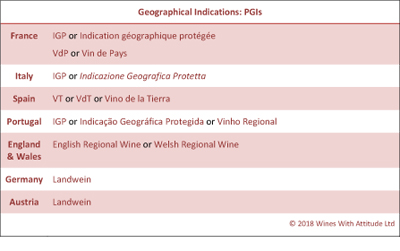
French PGI wines were effectively known in the past as “vins de pays”; now they can be identified by the term “Indication Géographique Protégée” or IGP like Domaine Gayda’s Figure Libre which is labelled as Pays d’Oc Indication Géographique Protégée. IGP wines can also label themselves varietally as Domaine Gayda does on its Figure Libre where is states that it is Cabernet Franc but of course only 85% need be Cabernet Franc and there is no requirement to state what the other grapes are in the blend. Although in fact this example is 100% Cabernet Franc; up to 15% of the Cabernet Franc grapes may come from outside the Pays d’Oc region however again in this example 100% are from the Pays d’Oc.
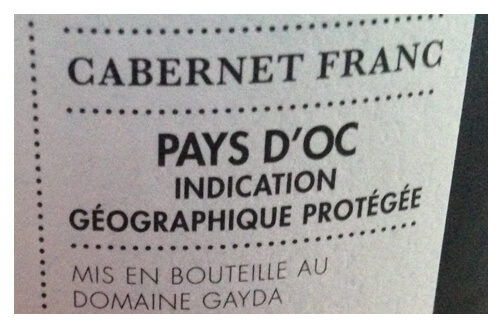
This is a good appellation example because you might think that this wine could perhaps be an Appellation Contrôlée wine however it does not meet the criteria for the local AC, , Languedoc AC as Cabernet Franc is not a permitted variety there.
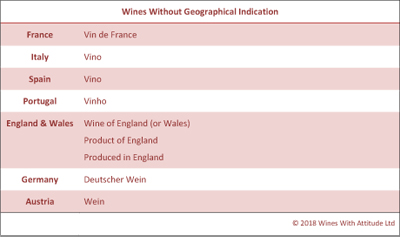
Wines without GI used to be known as table wines or in France as “vins de table”. These may now include the name of the grape varieties and the vintage on the label but of course not the region.
It will probably not surprise you to know that there is no straightforward answer to this question. The short answer is that wines with an appellation of origin were more likely to give some assurance of better quality in the past.
PDO wines have stricter regulations to follow than PGI wines which have stricter regulations than wines without GI so you can be sure that for PDO and PGI wines the relevant boxes have been ticked in terms of adherence to the GI specific regulations e.g. re grape varieties used or maximum yields permitted. And of course you will know where the wine has been produced and where the grapes (or 85% of them) are from. But you could still be disappointed in a PDO wine and delighted with a wine without GI. This is partly of course due to personal preferences but there are more and more instances of winemakers choosing to work outside the regulations.
Winemakers are increasingly breaking the rules intentionally or because of a poor vintage and not therefore qualifying for the relevant regulations; they therefore have to – or prefer to – use the PGI or catch-all categories when labelling their wine. It may simply be that they want to use 20% of grapes from outside the relevant region and can no longer fall into the PGI category. Or they may prefer to use a grape that is not permitted under a specific PDO. This is in fact the origin of the Super Tuscan wines like Sassicaia, Tignaello and Ornellaia in the 1970s and 80s; forward-thinking winemakers mixed international grape varieties with the permitted Sangiovese and had to label them as Table Wines.
So PGIs and wines without GIs can include some high quality wines – though there is nothing on the label to indicate that they are. The price may be a giveaway – but conversely some less reputable winemakers may see this as an opportunity to pass off their wines as SuperTuscan or similarly “rebellious” wines and inflate their prices which means you could be disappointed. There are simply no guarantees.
There are some examples of these sorts of wines in the Wines With Attitude portfolio including Domaine Gayda as mentioned above – well, I do love a “rebel”!
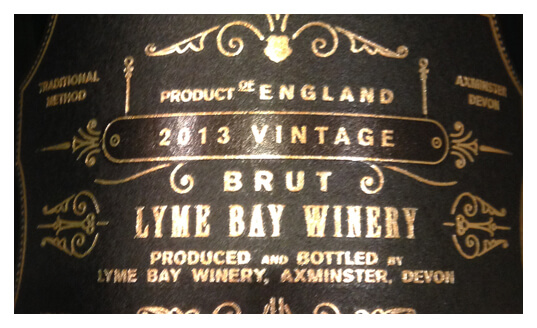
And sometimes wineries try to find the most practical solution. Luke Idzikowski, head winemaker at Lyme Bay whose sparkling Classic Cuvée I stock, explains why that wine is labelled Product of England rather than English Wine “The wines have got PDO, but we decide to label it as Product of England. Nyetimber and many of the other English wineries do the same. The PDO is Quality English Sparkling, which doesn’t seem as fashionable as Product of England. We also have the Brut Reserve which is only eligible for PGI because it has some Seyval Blanc in it. Product of England covers all the wines.”
And I think you’ll agree, there is definitely something in keeping things simple!
© 2014-2025 Wines with Attitude Ltd | VAT Reg. No. 181 2419 22 | Registered in England 08918466 | Fiveways, 57-59 Hatfield Road, Potters Bar, Herts, EN6 1HS